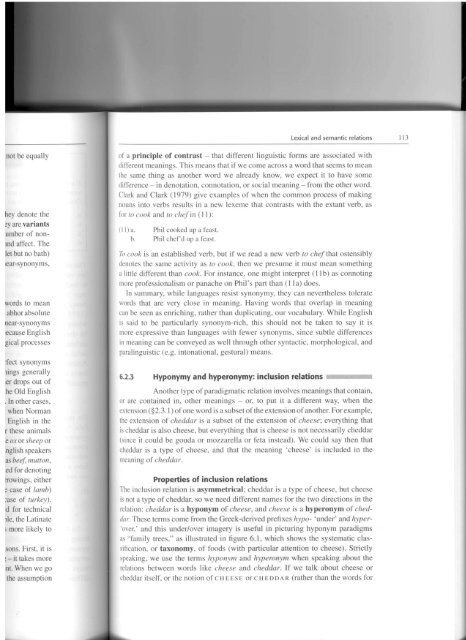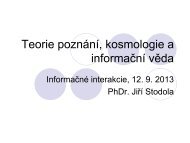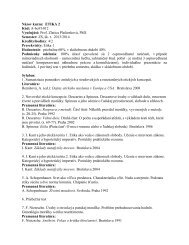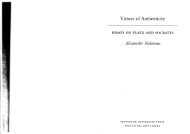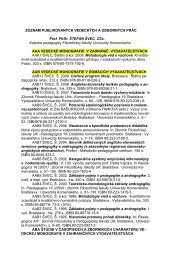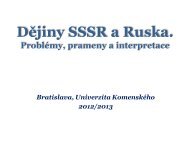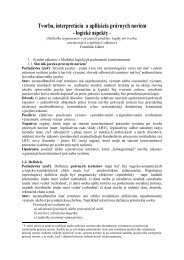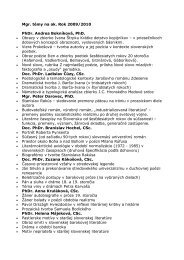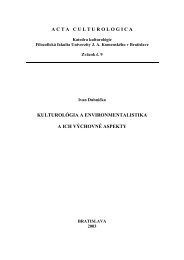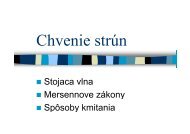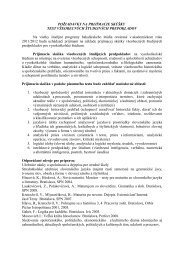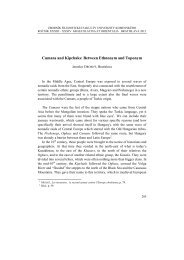You also want an ePaper? Increase the reach of your titles
YUMPU automatically turns print PDFs into web optimized ePapers that Google loves.
not be equally<br />
hey denote the<br />
~yare variants<br />
umber of nonmd<br />
affect. The<br />
let but no bath)<br />
iear- ynonyms,<br />
word to mean<br />
abhor absolute<br />
near- ynonyms<br />
ecau e English<br />
gical processes<br />
fect ynonyms<br />
ung generally<br />
tel'drops out of<br />
:heOld English<br />
. In other ca es,<br />
when Norman<br />
Engli h in the<br />
r these animal<br />
e ox or sheep or<br />
ngli h speakers<br />
as beef, mutton,<br />
led for denoting<br />
rrowings, either<br />
e case of lamb)<br />
:a e of turkey).<br />
:d for technical<br />
ile, the Latinate<br />
; more likely to<br />
ans. First, it is<br />
~- it takes more<br />
nt, When we go<br />
the as umption<br />
Lexical <strong>and</strong> <strong>semantie</strong> <strong>relations</strong> l 13<br />
of a principie of contrast - that different lingui tic form are associated with<br />
different meanings. This means that if we come across a word that seem to mean<br />
the same thing a another word we already know, we expect it to have orne<br />
difference - in denotarion, connotation, or social meaning - from the other word.<br />
Clark <strong>and</strong> Clark (1979) give examples of when the common proce of making<br />
nouns into verbs result in a new lexerne that contra ts with the extant verb, a<br />
for to cook <strong>and</strong> to chef in (l l):<br />
(Il) a. Phil cooked up a feast.<br />
b. Phil cheťd up a feast.<br />
Tocook is an e tabli hed verb, but if we read a new ve rb to ch~fthat ostensibly<br />
denotes the same activity as to cook, then we presurne it mu t mean something<br />
a little different than cook. For instance, one might interpret (l lb) as connoting<br />
more professionalism or panache on Phil's part than (lIa) does.<br />
In summary, while language resist synonyrny, they can nevertheless tolerate<br />
words that are very close in meaning. Having words that overi ap in meaning<br />
can be seen as enriching, rather than duplicating, our vocabulary. While English<br />
is aid to be particularly synonyrn-rich, this should not be taken to say it is<br />
more expressive than languages with fewer synonyms, since subtie differences<br />
in mean ing can be conveyed a well through other yntactic, rnorphological, <strong>and</strong><br />
paralinguistic (e.g. intonational, gestural) means.<br />
6.2.3 Hyponymy <strong>and</strong> hyperonymy: inclusion <strong>relations</strong><br />
Another type of paradigmatic relation involves meanings that contain,<br />
or are contained in, other meanings - or, to put it a different way, when the<br />
extension (§2.3. l) of one word is a subset of the extension of another. For example,<br />
the extension of cheddar i a ubset of the extension of chee e; everything that<br />
ischeddar is also cheese, but everything that is chee e is not necessarily cheddar<br />
(since it could be gouda or rnozzarella or feta instead). We could say then that<br />
cheddar is a type of cheese, <strong>and</strong> that the meaning 'cheese' is included in the<br />
meaning of cheddar.<br />
Properties of inclusion <strong>relations</strong><br />
The inclusion relation i asymmetrical; cheddar i a type of cheese, but cheese<br />
i not a type of cheddar, o we need different names for the two directions in the<br />
relation: cheddar i a hyponym of cheese, <strong>and</strong> cheese is a hyperonym of cheddar.<br />
These terms come from the Greek-derived prefixes hypo- 'under' <strong>and</strong> hyper-<br />
'over,' <strong>and</strong> this under/over imagery is useful in picturing hyponyrn paradigms<br />
a "family trees" as illustrated in figure 6.1 which shows the y ternatic classification,<br />
or taxonomy, of foods (with particular attention to chee e). Strictly<br />
speaking we u e the terms hyponytn <strong>and</strong> hyperonym. when speaking about the<br />
<strong>relations</strong> between word like cheese <strong>and</strong> cheddar. lf we talk about cheese or<br />
cheddar itself, or the notion of CHE E S E or CHE O o AR (rather than the words for


